Center for Teaching
Teaching outside the classroom.
Teaching and learning experiences that take place outside of the confines of the classroom walls have a range of benefits for both students and instructors. When students are asked to put into practice “in the real world” what they have theorized about from behind a desk, the result is a student-centric learning experience that enhances learning and fosters personal and social development (Larsen, Walsh, Almond, & Myers, 2017). Further, students that engage in learning experiences outside of the classroom report having higher levels of motivation, recall the course material more vividly, and have improved academic performance in the class (Takeuchi et al., 2016; Ryan and Deci, 2017). Moreover, field experiences early in a student’s career can be formative and can inspire students to continue in a field (e.g., Hutson, Cooper, & Talbert, 2011).
Learning experiences outside the classroom are forms of experiential learning (Dewey, 1897). These experiences are rooted in the simple principle that “experience is the best teacher.” Under this framework, learning outside of the classroom is an active process, wherein students encounter authentic problems, construct novel hypotheses, test for real solutions, and interact with others to make sense of the world around them. When we do this, we encounter the world as a whole and are forced to engage multiple modalities, no matter which pair of disciplinary “lenses” we intended to wear. Because experiential learning is inherently interdisciplinary, scientists and humanists alike would do well to consider the ways in which other disciplines might enrich their own disciplinary approach to their field.
There are many ways to make learning extend outside the classroom:
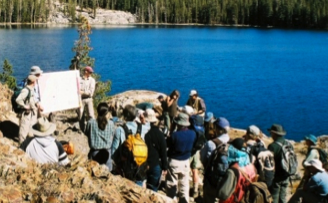
- Field Trips

Study Abroad
General strategies for successful field trip and field-based learning experiences, technology outside (and inside) the classroom, assessment of field experiences.
- Additional Resources for Research on Experiential Learning
Field Trips and Field-Based Learning

Field trips may be defined as “any journey taken under the auspices of the school for educational purposes” (Sorrentino & Bell, 1970, p. 223). Along with the engagement of concepts that is required by these experiences, the student bonding that occurs on field trips enhances the learning experience and creates a learning community as students continue onward in a discipline. Teaching in the field also gives instructors the opportunity to get to know their students in greater depth in terms of how the students see the world differently than the instructor. This insight into student world-views can help the instructor to better communicate the concepts of the course.
Field trips can take a variety of forms that meet a diverse set of needs and can enhance deep, active learning. The intended educational outcomes of field trips focus on the following five areas (Behrendt & Franklin, 2014; Larsen et al., 2017; Tal & Morag, 2009):
- Developing social and personal skills
- Developing observation and perception skills
- Adding relevance and meaning to learning
- Providing first-hand real-world experiences
- Enhancing intrinsic motivation and interest in the subject
Field trips are a common component of many K-12 classrooms, with a wealth of reviews in the primary literature summarizing their benefits and best practices (e.g., Behrendt & Franklin, 2014; DeWitt & Storksdieck, 2008; Wilson, 2011). In the college classroom, field trips (or field-based learning ) can be an effective tool that satisfies many of the above goals. For some disciplines (e.g., geology, ecology) it is relatively easy to imagine what a field-based learning experience can look like, whereas for other disciplines (e.g., philosophy, English), it may not be immediately obvious. To help instructors begin to imagine the possibilities that could exist in their courses, Fedesco, Cavin and Henares (in press) recently used a database of 721 field trips from 2015-2018 at a small, private, liberal arts college in the Southwest to create a typology of field study experiences in higher education. The authors identified the following types of field-based learning experiences:
- Collecting primary data/visiting primary sources – Students and instructors gather data in a novel setting, with open-ended and unpredictable learning outcomes for students depending on the results of that data. Being immersed within the subject material allows for deep learning for students, as they experience the authenticity of data collection and the process of interpreting that data. Instructors should be flexible and prepared to navigate difficult and/or unproductive outcomes – such as if the data don’t reveal anything significant (or present a result that is counter to the instructor’s initial predictions). However, these experiences have the highest potential for learning for students, as they are in a sense creating new knowledge.
- Guided discovery of a site – The class visits a site that is familiar to the instructor but new to the students and the instructor plans an activity that leads the students to uncover an intended outcome. Students should use the skills and concepts they learned in an earlier portion of the course and apply them in a novel setting to help guide learning. Instructors should consider how their materials and questions will help students develop higher-order skills, such as investigating, questioning, and developing critical thinking skills. Because they are time-consuming and require a significant investment from the instructor, they are best used to teach conceptually difficult or especially important course material. For more information on preparing and facilitating guided discovery problems in your classroom, see the guide on the National Association of Geoscience Teachers website .
- Backstage access – The class is granted access to a site or a place that the general public does not have access to, thus giving a unique experience to the students that allows for insights and experiences that are difficult to come by normally. For an on-campus example, a class might visit a University research lab or center that is available only to students registered in a course (such as the Breazeale Nuclear Reactor at Penn State ). For off-campus examples, students might visit a net-zero residence, tour behind the scenes of a government building, or meet with employees of a local company. These experiences may require an initial contact with a community partner or a prior-established relationship; however, the learning outcomes for students are enormous, and some companies may be willing to work with classes as the experience offers a networking opportunity for both students and potential employers.
- Show and tell – The class is given access to a third-party expert or a site where they might hear from the expert, such as in the collections of a museum with a curator. Like backstage access, this represents an opportunity for students to have an experience that is not available to the general public and can thus result in deep learning and foster meaningful connections for students. This also helps the instructor cover subject material with which they may not be intimately knowledgeable. However, instructors should have a role in planning with the third-party expert to ensure active engagement from their students; otherwise, you run the risk of students sitting or standing for long periods of time for an uninspiring lecture.
- Place-based immersion – The class spends a significant amount of time in a place, investigating either a specific subject or an entire breadth of subjects tied to that place. Places have both natural and cultural histories, which therefore lend themselves to examination by all disciplines. Field experiences and research are at the core of many of the natural and social sciences. In the humanities, field experiences might be working in archives, collecting oral histories, performing one’s art for a public audience, but it could also include visiting important historical sites and place-based experiences including using places for inspiration.
- Community engagement – Professors and students engage in a partnership with a local organization or institution over the span of the course or travel to a site to do time-bound projects, often with a significant investment from the students. These projects, typically designed by both faculty and community partners, allow for students to learn in highly effective ways while helping a community address its needs. In all of these experiences, student growth can be extensive, whether it is through improved critical thinking and problem-solving skills, greater personal efficacy and leadership development, or enhanced social responsibility and career opportunities. For more information on the benefits and methods of these pedagogies, as well as step-by-step guides to successful service learning courses, please visit the CFT’s Service Learning and Community Engagement teaching guide and the Community Engaged Teaching Step by Step teaching guide .
- Retreats – The class gets away to a remote site for as little as a day or as much as a week to bond, to focus on the subject or a special project, and/or to write. The retreat can be combined with the benefits of place-based immersion, although there need not be a reason for the class visiting a specific site. The main objective of a retreat is to garner the benefits of students spending focused time in close proximity together and away from the hustle and bustle of normal college life. Some outdoor learning experiences, due to their length, are by definition retreats: for example, geologic field trips; wilderness literature backpacking trips; and study abroad experiences.
- Special Events – The class travels to a conference or a special event (e.g., a speaker on campus, a film, a performance, etc.) that is pertinent to the course content or objectives. The instructor has little control over what is said during the event and thus should feel comfortable giving up the reins for this experience. A degree of flexibility for the instructor and maturity on the students’ parts will help these events fit within the framework of the class schedule. Instructors should be prepared to give a pre-event lesson and a post-event lesson to help ensure students meet the intended learning outcomes.
Benefits for Students Who Participate in These Experiences Include:
- knowledge transfer and knowledge recall (Nadelson & Jordan, 2012)
- increased relevance, improved perspective-taking, and increased autonomy (Lai, 1999)
- increased interest in the subject and influence on one’s college major and future career (Hutson et al., 2011)
- improvement in concept knowledge (Elkins & Elkins, 2007)
- improvements in understanding course content, performance on course assignments, and interest in the subject (Goh & Ritchie, 2011).
- increased relatedness with instructors and peers, competence, autonomy, and intrinsic motivation in the course (Fedesco et al., in press)
Key Factors That Promote Successful Experiences Include:
- See the section below titled “General Strategies for Successful Field Trip and Field-based Learning Experiences”
Additional Resources:
- National Association for Geoscience Teachers (NAGT) guides for Teaching in the Field and Safety in the Field
- Special Issue of Journal of Geoscience Education on Teaching in the Field
- Searchable collection of references and resources on field-based learning from the Synthesis of Research on Learning in the Geosciences by the Science Education Resource Center
- “ Field Notes ” by David W. Mogk, Dept. of Earth Sciences, Montana State University: Research based methods for successful field trips, including specific examples for a geoscience course
- The Out-of-Classroom Experience by Dave Douglass: A comprehensive article on things to consider when “dreaming-up, organizing, planning and leading field trips and other learning activities that will take place outside of the traditional classroom setting”
- Vanderbilt Release form for student field trips
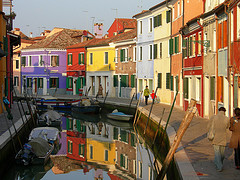
There are several models for study-abroad programs. In some, participants enroll in foreign universities as visiting, non-matriculated students. In other programs, the sending institution retains more control over the curriculum, duration, faculty selection, and experience. Increasingly, schools are internationalizing their curriculum by offering short-term, faculty-led, study abroad programs. Vanderbilt’s Global Education Office administers many programs available for students to study abroad.
Benefits for Students Who Participate in These Programs Include:
- increase in student willingness to take courses outside of their major
- increased confidence to travel abroad in longer-term programs
- increased interest in interdisciplinary studies
- increased skills of inter-cultural communication
- greater international or comparative understandings of social issues
- a more sophisticated understanding of global social change
- greater understanding of inequalities and differences in the world system
Key Factors That Promote Successful Programs Include:
- academic rigor
- use of mixed teaching methods
- facilitated reflection synthesizing experiences with academic content
According to Lori Gardinier and Dawn Colquitt-Anderson, “There is no formula for the percentage of time that should be spent in formal class time, seeing cultural/historical sites and events, doing field work, or engaging in peer-to-peer cultural exchange. Regardless of the mix, students should arrive at the destination with a grounding in both the academic and cultural context through a combination of pre-departure lectures, guided research, online discussions, readings, and cultural events relevant to the trip.” (26)
In study abroad situations, faculty leaders assume a number of roles that extend beyond the classroom, and setting appropriate boundaries becomes critical. It can be helpful to set specific parameters for how, when, and where you will relate to students during the program.
It is important to identify risks and liability. Directors must be prepared for expected emergencies involving lost or stolen property, illnesses, and so on, as well as unexpected emergencies involving natural and manmade disasters.
- The Institute of International Education Founded in 1919, the Institute of International Education (IIE) is a private nonprofit leader in the international exchange of people and ideas. In collaboration with governments, foundations and other sponsors, IIE creates programs of study and training for students, educators and professionals from all sectors. These programs include the flagship Fulbright Program and Gilman Scholarships administered for the U.S. Department of State. IIE also conducts policy research, provides resources on international exchange opportunities and offers support to scholars in danger.
- The National Association of International Educators (NAFSA) NAFSA and its members believe that international education and exchange—connecting students, scholars, educators, and citizens across borders—is fundamental to establishing mutual understanding among nations, preparing the next generation with vital cross-cultural and global skills, and creating the conditions for a more peaceful world.
- Journal of Studies in International Education The Journal of Studies in International Education (JSI) is a forum for higher education administrators, educators, researchers and policy makers interested in research, reviews, and case studies on all facets of the internationalization of higher education. Each issue brings together the concepts, strategies, and approaches of internationalization, the internationalization of the curriculum, and issues surrounding international students and cross-border delivery of education.
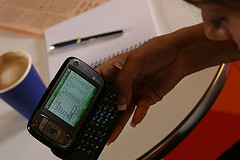
Tips and Techniques:
These tips were provided by VU faculty experienced in taking students on field trips.
- Set up the field trip as a research project that includes data collection.
- Conduct a theoretical examination of the issue in class long before going into the field. Students should have a sense of what the field trip is going to be about before they go.
- At least two weeks before heading into the field, develop the rudiments of basic hypotheses. At this point the instructor should give details about the field site so that students know what to expect.
- In the field, focus on the things that you’ve agreed to focus on and let the other stuff be icing on the cake.
- Take a backpack full of extra warm/dry clothes and snacks to pass out to students as the need arises.
- If for a large class, prepare TAs well to manage smaller groups of the class.
- Prepare students for practicalities including appropriate attire, expectations for physical exertion, anticipated rest stops, supplies and materials they should bring.
Additionally, Fedesco et al. (in press) has identified five specific tips to help educators have a successful field-based learning experience:
- Begin the trip with a full value contract (FVC). The FVC is a document written for the group, by the group, and establishes agreed upon expectations on what is appropriate or inappropriate behavior on the trip. This document, which can be updated as needed, can be referred to throughout the trip, and provides a sense of safety and community for the class.
- Logistics play an important role in the success of a field trip. If students are lacking in basic human needs (e.g., uncomfortable temperatures, hungry/thirsty, standing in direct sunlight, exhaustion), they will be less likely to learn. Check the weather forecast and have students plan accordingly. Make sure you have plenty of food to eat throughout the day, and be mindful of food allergies and preferences to ensure a smooth experience.
- Carefully consider the sequence of events during a field trip. Outdoor education expert Jay Roberts (2016) recommends that mornings are better for intellectual topics, afternoons are better for hands-on activities, and evenings are best for reflection and interpersonal discussions.
- Balanced programming should be taken into consideration when planning field trips. Instructors should avoid over- or under-programming trips, which could lead to either information saturation or boredom. Instructors should continuously take the pulse of the experience so if necessary, they can implement their contingency plan by either cutting back on some activities or incorporating more experiences or assignments into the trip.
- Instructors about to embark on a field trip should be prepared to engage in risk management behavior. Before leaving for a trip, instructors should be familiar with and have contact information for emergency resources in the field location, campus security, administration, transportation, and mental health and sexual assault counselors.
Advances in technology make it relatively easy for students to bring digital technology with them when they leave the classroom, or for instructors to bring the outdoor learning environment into the classroom. In the field, students can use mobile devices—including ones they already own—to engage in learning activities. In the classroom, instructors can use drone footage, mobile apps, and programs like Google Earth to bring outdoor environments inside, thus bringing far-away or inaccessible outdoor phenomena to all students. Below are some examples to help you start thinking about how you might use technology outside (and inside!) your classroom.
Location-Specific Content
With the right apps, students can access content that is tied to a particular location and only available when students visit that location.
- Spanish instructors at the University of New Mexico use an iPhone app from the Augmented Reality and Interactive Storytelling (ARIS) project to send students on a fictional murder mystery through the Los Griegos neighborhood in Albuquerque that develops and tests their language skills. Students receive location-specific clues to the mystery by typing their location into the app.
- The Iowa City UNESCO City of Literature iPhone app provides text, audio, and video content about Iowa City authors based on the user’s GPS-determined location. Instructors at the University of Iowa plan to have students use this app to learn more about Iowa City authors and their connections to particular local environments.
- CFT director Derek Bruff incorporated QR codes in an end-of-semester “crypto hunt” in his first-year seminar on cryptography. Students cracked codes and ciphers that led them to particular locations on campus featuring QR codes, two-dimensional bar codes that students scanned with their smart phones to receive additional clues in the hunt.
- Instructors can also have students create location-specific content. For example, students at the University of Northern Colorado created a scavenger hunt designed to teach other students about local water rights using the ARIS platform.
Data Collection and Sharing
Mobile devices have a variety of mechanisms for collecting and sharing data. Students can use these devices to generate location-specific content whether on a field trip or on their own.
- Shaul Kelner, associate professor of sociology and Jewish studies at Vanderbilt, taught a course titled “Tourism, Culture, and Place” in the spring 2011 semester. Students in the course visited different tourist sites around Nashville, captured photos of these locations using their cell phones while on-site, and then blogged about their visits and their photos later.
- Margaret Rubega, associate professor of ecology and evolutionary biology at the University of Connecticut, requires students in her ornithology course to use the social media service Twitter to “tweet” about the birds they see as they go about their lives–what birds they see, where they see them, and any connections to course content that occur to the students. They tag their tweets with the hashtag #BirdClass to make it easy for all involved to find and read each other’s tweets.
- Lawrence University students in an introduction to environmental science course collect geotagged water quality data during field trips using GPS devices and tablet PCs. Students pool their data, then analyze it using geospatial visualization software while still in the field. Many such specialized data collection and analysis tools are developing mobile apps that run on iPhones and other smart phones.
If you’re interested in using technology in the field in your courses, please contact the CFT’s educational technologist Rhett McDaniel for help getting started.
- Rubrics developed by the Associate of American Colleges & Universities (AAC&U) including some on civic knowledge and engagement, teamwork, problem solving, integrative and applied learning.
- Reflection papers
- Lab reports
- Suggestions for assessment of field courses by the National Association of Geoscience Teachers
Additional Resource for Research on Experiential Learning
- National Society for Experiential Education (NSEE)
Behrendt, M., & Franklin, T. (2014). A review of research on school field trips and their value in education. International Journal of Environmental and Science Education , 9 , 235-245. http://doi.org/10.12973/ijese.2014.213a
Dewey, J. (1897). My pedagogic creed . New York: E. L. Kellogg & Co.
DeWitt, J. & Storksdieck, M. (2008) A short review of school field trips: Key findings from the past and implications for the future. Visitor Studies, 11 , 181-197, http://doi.org/ 10.1080/10645570802355562
Elkins, J. T., & Elkins, N. M. (2007). Teaching geology in the field: Significant geoscience concept gains in entirely field-based introductory geology courses. Journal of Geoscience Education , 55 , 126-132. http://doi.org/10.5408/1089-9995-55.2.126
Fedesco, H. N., Cavin, D., & Henares, R. (in press). Field-based learning in higher education: Exploring the benefits and possibilities. Journal of the Scholarship of Teaching and Learning.
Gardinier, L. & Colquitt‐Anderson, D. (2010). Learning abroad. New Directions for Teaching and Learning, 2010, 23-29, http://doi.org/ 10.1002/tl.417
Goh, E. & Ritchie, B. (2011) Using the Theory of Planned Behavior to understand student attitudes and constraints toward attending field trips. Journal of Teaching in Travel & Tourism, 11 , 179-194. http://doi.org/10.1080/15313220.2011.575024
Hutson, T., Cooper, S., & Talbert, T. (2011). Describing connections between science content and future careers: Implementing Texas curriculum for rural at-risk high school students using purposefully-designed field trips. Rural Educator , 33 , 37-47.
Lai, K. C. (1999). Freedom to learn: A study of the experiences of secondary school teachers and students in a geography field trip. International Research in Geographical and Environmental Education , 8 , 239-255. http://doi.org/10.1080/10382049908667614
Acknowledgements
1 This guide was originally written in 2010 by Lily Claiborne and John Morrell (Graduate Teaching Fellows) and Joe Bandy and Derek Bruff (CFT Assistant Directors). It was updated in 2020 by Gregory Smith (Graduate Teaching Fellow) and Heather Fedesco (CFT Assistant Director) to include primary literature research in higher education that has come out since the original iteration.

Teaching Guides
Quick Links
- Services for Departments and Schools
- Examples of Online Instructional Modules
Search form
- About Faculty Development and Support
- Programs and Funding Opportunities
Consultations, Observations, and Services
- Strategic Resources & Digital Publications
- Canvas @ Yale Support
- Learning Environments @ Yale
- Teaching Workshops
- Teaching Consultations and Classroom Observations
- Teaching Programs
- Spring Teaching Forum
- Written and Oral Communication Workshops and Panels
- Writing Resources & Tutorials
- About the Graduate Writing Laboratory
- Writing and Public Speaking Consultations
- Writing Workshops and Panels
- Writing Peer-Review Groups
- Writing Retreats and All Writes
- Online Writing Resources for Graduate Students
- About Teaching Development for Graduate and Professional School Students
- Teaching Programs and Grants
- Teaching Forums
- Resources for Graduate Student Teachers
- About Undergraduate Writing and Tutoring
- Academic Strategies Program
- The Writing Center
- STEM Tutoring & Programs
- Humanities & Social Sciences
- Center for Language Study
- Online Course Catalog
- Antiracist Pedagogy
- NECQL 2019: NorthEast Consortium for Quantitative Literacy XXII Meeting
- STEMinar Series
- Teaching in Context: Troubling Times
- Helmsley Postdoctoral Teaching Scholars
- Pedagogical Partners
- Instructional Materials
- Evaluation & Research
- STEM Education Job Opportunities
- AI Guidance for Faculty and Students
- Yale Connect
- Online Education Legal Statements
You are here
Experiential learning & field trips at yale.
Experiential learning is a holistic learning model based on an integrative process where students first obtain knowledge, then perform an activity (generally with some “real-world” application), and finally reflect on the experience (Kolb 1984), often iteratively. Whereas study abroad programming has reduced its scope across American universities in recent years, studies show that greater depth, breadth, and progressive iteration prove especially fruitful for student learning and skills growth (Coker, et. al, 2017).
“Experiential” can refer to any learning where instructors guide students to apply conceptual knowledge in actual problems or situations. Classic scenarios include activities and experiences held outside of class and/or off campus: service learning in order to better understand the course content or the methods of the discipline; fieldwork conducting research or practice at an off-campus site in direct contact with the entities or phenomena being studied; community-based research in cooperation with local nonprofits to conduct studies to meet the needs of a particular community; and clinical learning. But, it also includes more conventional active learning techniques used in the classroom, such as problem solving, simulations, case studies, peer-to-peer teaching, and material study. Coker, et. al. (2017) also include internships and leadership, given their real world pressures and cycle of experience, reflection, and action.
Field Trips
When constructed to include reflection, conceptualization, and activity, field trips can provide incredibly formative and impactful educational experiences for students. Yale professors typically plan field trips in three main forms:
- on-campus class outings, e.g. a visit to Yale University Art Gallery , Center for British Art , Beinecke Rare Book and Manuscript Library, Peabody Museum of Natural History , the Babylonian Collection , or a walk around New Haven
- optional off-campus activities, e.g. trip to New York City or Boston (both about 2-hour drives)
- required off-campus outings (including semi-optional but formally class-organized trips, such as Spring Break trips abroad led by the instructor)
The third category is strictly regulated by Yale College’s guidelines governing field trips: the Yale College Dean’s office defines an “academic field trip” as a “course-related activity that serves educational purposes and occurs outside of the classroom at a location other than on the campus at which the course is regularly taught.” In addition, if a course is regularly taught outside of a classroom or at locations away from campus (as in the case of fieldwork courses), these same recommended guidelines apply. Instructors planning academic field trips along the terms of the third category should contact Dean George Levesque, 203-432-2920.
Experiential learning in the form of field trips is not only pedagogically promising—it is also very popular among students. There is a general Yale student consensus that funded field trips make classes more attractive, and Yale administrators suggest considering October and Spring Break for class field trips. Numerous classes have boosted their enrollment numbers by optioning an international field trip, while others boost student motivation by reserving trip applications to students with an A average.
Other experiential learning opportunities include:
- A STEM undergraduate student conducts laboratory research for course credit.
- A geology class takes a field trip to Costa Rica to study volcanic processes.
- A foreign language class includes a home-stay component and required participation in other cultural activities.
- A political science class includes a research assignment requiring students to interview the city’s local aldermen.
- A refugee law class visits a refugee legal aid clinic, and students design projects to help meet the needs of the non-profit organization.
For more examples of field trips and other experiential learning activities, instructors can peruse Harvard’s “ Activity Database ,” a compendium of activity-based learning activities recently conducted in undergraduate courses.
Recommendations
- Follow Policy - Instructors should review Yale College’s Academic Field Trip Policies .
- Register - Instructors should review Yale’s International Toolkit and register your trip even if domestic (so that Yale can provide aid in the event of an emergency in a particular city).
- Scale Up - First time field-trip instructors might start with simple outings which fall under the first two categories discussed above. Instructors may also ask their departments for examples of successful field trips led by colleagues.
- Scale Down - Instructors should make any costs associated with these outings clear at the start of the course, verbally and in writing in the syllabus. They may also work to minimize costs to students, and avoid revising or changing costs, unless to reduce, wherever possible.
- Ask for Funding - Because funding for field trips is hard to come by (there is no central Yale funding for field trips), departments are the best sources of funding. Additionally, the CTL’s Faculty Teaching Initiatives offers $500 Instructional Enhancement Funds on a first come -first serve, competitive application basis. Funding for the program is replenished annually, at the beginning of the fall term.
- Consider Transport - Public transportation is encouraged, and transportation must meet Yale’s field trip transportation guidelines . For private transportation outside of Yale, Yale Transportation often recommends Dattco for instructors wishing to book vans, shuttles, and coach buses.
- Accessibility Awareness - Instructors considering travel or experiences including bodily interaction should be aware of student accessibility concerns, and provide dynamic policies to support students with travel restrictions and mobility disability.
Coker, J., Heiser, E., Taylor, L., & Book, C. (2017). Impacts of Experiential Learning Depth and Breadth on Student Outcomes. Journal of Experiential Education 40.1: 5-23.
Kolb, D. A. (1984). Experiential learning: Experience as the source of learning and development. Englewood Cliffs, NJ: Prentice-Hall.
Moore, D. T. (2010). Forms and issues in experiential learning. In D. M. Qualters (Ed.) New Directions for Teaching and Learning (pp. 3-13). New York City, NY: Wiley.
Wurdinger, D. D., & Carlson, J. A. (2010). Teaching for experiential learning: Five approaches that work. Lanham, MD: Rowman & Littlefield Education.
YOU MAY BE INTERESTED IN

The Poorvu Center for Teaching and Learning routinely supports members of the Yale community with individual instructional consultations and classroom observations.

Instructional Enhancement Fund
The Instructional Enhancement Fund (IEF) awards grants of up to $500 to support the timely integration of new learning activities into an existing undergraduate or graduate course. All Yale instructors of record, including tenured and tenure-track faculty, clinical instructional faculty, lecturers, lectors, and part-time acting instructors (PTAIs), are eligible to apply. Award decisions are typically provided within two weeks to help instructors implement ideas for the current semester.

Reserve a Room
The Poorvu Center for Teaching and Learning partners with departments and groups on-campus throughout the year to share its space. Please review the reservation form and submit a request.
Evaluation of the Effectiveness of Field Trips in the Teaching and Learning of Biosciences
- Conference paper
- First Online: 30 June 2016
- Cite this conference paper

- Malarvili Ramachandiran 3 &
- Saroja Dhanapal 4
3037 Accesses
1 Citations
Field trips can be defined as a type of experiential learning that gets students out of the traditional classroom setting into a new mode of learning. It is advocated that field trips are one of the most important things educators can provide for their students as they not only expand students’ learning and experiences, but also increase students’ knowledge and understanding of the world in which they live. Despite ample evidence shown through research on the effectiveness of field trips which emphasizes on hands-on, real life, and practical applications of learning, the dilemma that is faced by educators lies in providing proof of student learning for the current trend in education tends to emphasize mainly on assessments. Therefore, the objectives of this study are, firstly, to evaluate the effectiveness of field trips as an educational tool to enhance student’s understanding of the subject taught and, secondly, to show whether report writing can be used as an assessment tool to evaluate the learning that takes place via field trips. Students pursuing an undergraduate degree program in biomedical science were used as the sample where they have participated in field trips which were then assessed via report writing. The results were analyzed using SPSS and the outcome indicated that there is an increased understanding of the subject among the students. The high percentage of scores in the report-writing task confirmed this finding. This was supported by a survey administered to the same sample which showed that students have a positive perception on the impact of the field trips on their understanding of the subject. The paper ends with recommendation for the incorporation of field trips in the curriculum to stimulate better understanding and increase motivation towards the learning of science. It is further advocated that report writing can be used as an effective assessment tool to evaluate this increased understanding.
This is a preview of subscription content, log in via an institution to check access.
Access this chapter
Subscribe and save.
- Get 10 units per month
- Download Article/Chapter or eBook
- 1 Unit = 1 Article or 1 Chapter
- Cancel anytime
- Available as PDF
- Read on any device
- Instant download
- Own it forever
- Available as EPUB and PDF
- Compact, lightweight edition
- Dispatched in 3 to 5 business days
- Free shipping worldwide - see info
- Durable hardcover edition
Tax calculation will be finalised at checkout
Purchases are for personal use only
Institutional subscriptions
Similar content being viewed by others

Implementing the Assessment of the Generic Attributes of Students Through Self-assessment Survey and ePortfolios at a Higher Education Institution

Systematic Review: Flipped Classrooms in the Performance of Undergraduate Science Students

Integrating Assessment Effectively into International Fieldwork: A Case Study Using Student-Led Teaching and Learning
Association for Experiential Education (AEE). (2012). What is experiential education? Retrieved April 14, 2015, from http://www.aee.org/about/whatIsEE
Behrendt, M., & Franklin, T. (2014). A review of research on school field trips and their value in education. International Journal of Environmental and Science Education, 9 (3), 235–245.
Google Scholar
Broad, B. (2003). What we really value: Beyond rubrics in teaching and assessing writing . All USU Press Publications. Book 140. http://digitalcommons.usu.edu/usupress_pubs/140
Feller, I., & Stern, P. C. (2007). A strategy for assessing science. Behavioral and social research on aging . Washington: National Academies Press.
Gibbs, G. (1992). Assessing more students . Oxford: Oxford Centre for Staff Development.
Hornby, W., & Laing, D. (2003). Assessment survey report no 1: Efficiency and effectiveness in assessment. Retrieved from https://www4.rgu.ac.uk/files/EFFICIENCY%20AND%20EFFECTIVENESS%20IN%20ASSESSMENT.pdf
Hudak, P. (2003). Campus field exercises for introductory geoscience courses. Journal of Geography, 102 (5), 220–225.
Article Google Scholar
Hutson, T., Cooper, S., & Talbert, T. (2011). Describing connections between science content and future careers: Implementing texas curriculum for rural at risk high school students using purposefully-designed field trip. Rural Educator, 31 , 37–47.
Kisiel, J. (2006). More than lions and tigers and bears-creating meaningful field trip lessons. Science Activities, 43 (2), 7–10.
Knapp, D. (2002). Memorable experiences of a science field trip. School Science and Mathematics, 100 (2), 65–72.
Kolb, D. (1983). Experiential learning, experiences as the source of learning and development . Englewood Cliffs, New Jersey: Prentice Hall.
Krepel, W. J., & Duvall, C. R. (1981). Field trips: A guideline for planning and conducting educational experiences . Washington, DC: National Science Teachers Association.
La Marca, N. (2011). The Likert scales: Advantages and disadvantages. Retrieved January 07, 2015 from Field research in organizational psychology. https://wordpress.com/2011/12/05/the-likert-scale-advantages-and-disadvantages/
Lei, S. A. (2010a). Assessment practices of advanced field ecology courses. Education, 130 (3), 404–415.
Lei, S. A. (2010b). Field trips in college biology and ecology courses: Revisiting benefits and drawbacks. Journal of Instructional Psychology, 37 (1), 42–48.
Martin, S., & Seevers, R. (2003). A field trip planning guide from early childhood classes. Preventing School Failure, 47 (4), 111–180.
Mawdsley, R. D. (1999). Legal issues involving fieldtrips. School Business Affairs, 65 (9), 28–31.
McKenzie, G. D., Utgard, R. O., & Lisowski, M. (1986, September/October). The importance of field trips as a geological example. Journal of College Science Teaching , 17–20.
Michie, M. (1998). Factors influencing secondary science teachers to organise and conduct field trips. Australian Science Teacher’s Journal, 44 , 43–50.
Mirka, G. D. (1970). Factors which influence elementary teachers’ use of out-of-doors . Columbus: The Ohio State University.
Montgomery County Public Schools. (2006). http://www.mcps.k12.md.us . Accessed June 22, 2015.
Nabors, M. L., Edwards, L. C., & Murray, R. K. (2009). Making the case for field trips: What research tells us and what site coordinators have to say. Education , 129 (4).
Nadelson, L., & Jordan, J. (2012). Student attitudes toward and recall of outside day: An environmental science field trip. Journal of Educational Research, 105 (3), 220–231.
National Research Council. (2009). Learning science in informal environments: People, places, and pursuits . Washington, DC: The National Academies Press.
Prokop, P., Tuncer, G., & Kvasnicak, R. (2007). Short-term effects of field programme on students’ knowledge and attitude toward biology: A Slovak experience. Journal of Science Education and Technology , 16 (3).
Rennie, L. J. (2007). Learning outside of school. In S. K. Abell & N. G. Lederman (Eds.), Handbook of research on science education . Mahwah, New Jersey: Erlbaum.
Scarce, R. (1997). Field trips as short term experiential education. Teaching Sociology, 25 , 219–226.
Scribner-MacLean, M., & Kennedy, L. (2007). More than just a day away from school: Planning a great science field trip. Science Scope, 30 (5), 57–60.
Tal, T., & Morag, O. (2009). Reflective practice as a means for preparing to teach outdoors in an ecological garden. Journal of Science Teacher Education, 20 (3), 245–262.
Touhidur, R., & Spafford, H. (2009). Value of field trips for student learning in the biological sciences. Teaching and Learning Forum 2009. http://ctl.curtin.edu.au/events/conferences/tlf/tlf2009/refereed/rahman.html . Accessed 22 June 2015.
Download references
Author information
Authors and affiliations.
Taylor’s University, Subang Jaya, Malaysia
Malarvili Ramachandiran
University of Malaya, Kuala Lumpur, Malaysia
Saroja Dhanapal
You can also search for this author in PubMed Google Scholar

Corresponding author
Correspondence to Malarvili Ramachandiran .
Editor information
Editors and affiliations.
Taylor’s University, Subang Jaya, Selangor Darul Ehsan, Malaysia
Siew Fun Tang
Loshinikarasi Logonnathan
Rights and permissions
Reprints and permissions
Copyright information
© 2016 Springer Science+Business Media Singapore
About this paper
Cite this paper.
Ramachandiran, M., Dhanapal, S. (2016). Evaluation of the Effectiveness of Field Trips in the Teaching and Learning of Biosciences. In: Tang, S., Logonnathan, L. (eds) Assessment for Learning Within and Beyond the Classroom. Springer, Singapore. https://doi.org/10.1007/978-981-10-0908-2_15
Download citation
DOI : https://doi.org/10.1007/978-981-10-0908-2_15
Published : 30 June 2016
Publisher Name : Springer, Singapore
Print ISBN : 978-981-10-0906-8
Online ISBN : 978-981-10-0908-2
eBook Packages : Education Education (R0)
Share this paper
Anyone you share the following link with will be able to read this content:
Sorry, a shareable link is not currently available for this article.
Provided by the Springer Nature SharedIt content-sharing initiative
- Publish with us
Policies and ethics
- Find a journal
- Track your research
Teaching Methods: Field trips
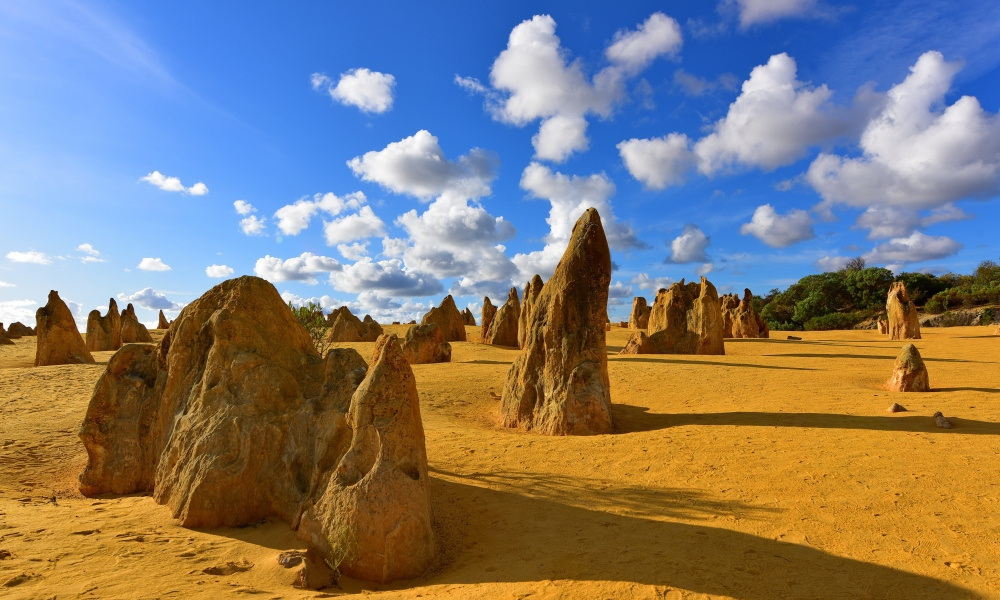
She's been called a ‘true rockstar teacher' – in the past 10 years, geoscientist Suzy Urbaniak has planned and led 45 Australian and international field trips, helping students understand how their learning applies in the real world.
This term Urbaniak received the 2016 Prime Minister's Prize for Excellence in Science Teaching in Secondary Schools. Here, in a Q&A with Teacher editor Jo Earp, she shares advice for organising inspiring field trips.
Jo Earp: Suzy, congratulations on the teaching award! Your previous career was as a geologist?
Suzy Urbaniak: Yeah. I've always had a fascination with rocks and obviously science. I'm curious about why things happen and how things come together. … When I started I was out in the field and I thought ‘well, I really didn't learn this at school, what did I go to school for?' The skills of science weren't actually taught and I was very frustrated by that.
So, when I went into teaching I made sure that it was all about the skills of science – science is doing not sitting at a desk reading a text book or completing worksheets.
JE: Now, you're at Kent Street Senior High School, in Perth, Western Australia. I understand you've clocked up almost 50 field trips, in this country and internationally. What are the benefits of field trips – for both students and teachers?
SU: You can see it happening before your eyes – you can see things in 3D, you can see how all the sciences interlock and create the spectacle before you. So, while you're out in the field [as a teacher] you're explaining all this to them [the students].
For instance, a redox reaction which demonstrates the formation of sulphur from sulphur dioxide and hydrogen sulphide gas, you can actually see the sulphur being precipitated in a geothermal area and the redox situation explained. Then it's connected to physics through energy and to geology through the volcanism … and there's plants growing near it; so you then take in a holistic approach. Students, and teachers, can actually then get the benefit because they can see it transpiring before their eyes.
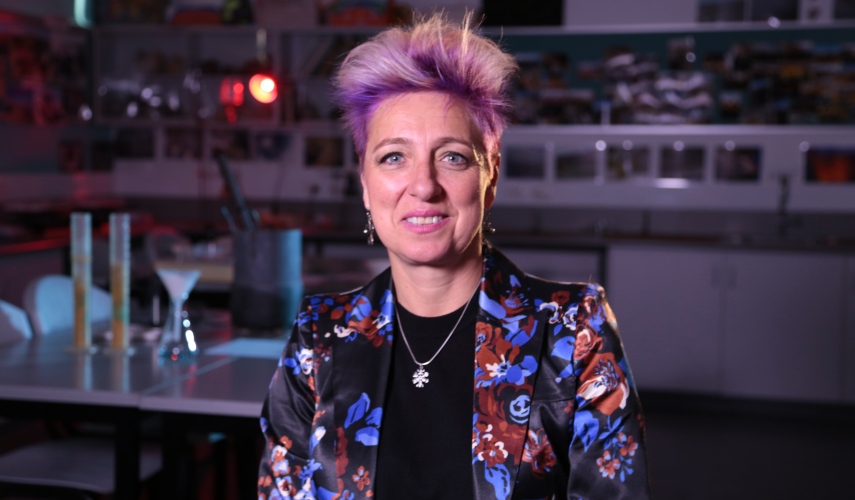
[Suzy Urbaniak. Image: Prime Minister's Prizes for Science/WildBear].
To me I always say to the kids ‘go back to when you were in Kindergarten and you used the senses, like smell, touch, taste' … to be curious about stuff and work out what it was. Those basic observations and measurements are rudimentary to good science, so I strip it back to that level. What you see, what you touch, what you hear, what you smell and what you taste – and in geology students do taste because they can then discriminate between what halite is and various other minerals.
It's just important to do real science. I say to my kids ‘love your data and let the data tell the story, don't have any preconceived ideas because that's not science.'
JE: A great bit of advice there. Now, if we can get to into nitty gritty of planning the field trips then – first, choosing where to go and why.
SU: The field trips are related to the curriculum but really anywhere you go you can find something that's related to the curriculum. I make my field trips an assessable task obviously, with any sort of medium that the students want to present their findings in. Definitely, I do have ideas of where to go … and through the field trips I have no trouble getting through the course, no trouble at all.
I don't prepare them much before the trip, but after the trip we use all the visuals and the life experiences, the field experiences, to guide and connect the so-called ‘dot points' of the curriculum together and they have a real life example to support their observations.
… Whether it's a student or a parent, they all say to me at the end of the field trip ‘I'll never look at a beach the same way again' or ‘I'll never look at a rock the same way again' because of the information that can be presented from actually seeing it and understanding everything in it.
A little olivine crystal in the Bunbury Basalt, for instance, or whether it's in the lava fields of Hawaii – taking it down to the nitty gritty in theoretical chemistry is the magnesium, iron and oxygen atom, which they do in Year 9 in looking at ionic compounds.
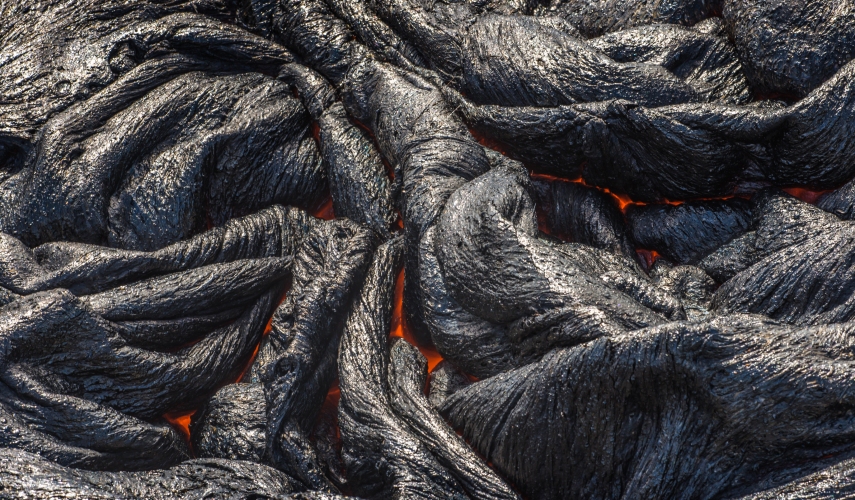
[Magma in a lava field in the Hawaii Volcanoes National Park. Image: ©Shutterstock/Pung].
JE: You mention there Hawaii, which sounds like a great trip to me! Obviously you can't get out and about to every destination before you go but is it important for teachers to scout out the trip?
SU: Oh yeah, I do dry runs. If I'm going into a new area I do a dry run and that's still the case. When I started out on these field trips I would go and do a dry run and just familiarise myself with the area and identify things. Now I'm a lot more spontaneous, definitely spontaneous – we'll be just driving along the road and if I see something that should be addressed I will stop. We call these spontys!
And, similarly, I used to have a workbook that I worked out of and I don't do that anymore; it's more free range, more student-centred, open learning. There are stops and at those stops the students need to actually work as field scientists. They don't answer questions, they listen to what I have to say, they'll draw perhaps what I'm saying, they use technology, take photos, use Skitch to annotate the images on the spot there and then, they put it all together into a document of some description.
It's got to the point where this year's Year 12 [in some of their field trip reports] they then correlated the stops to the dot points in the Australian Curriculum. So, the science understanding, the science inquiry strand as well as human endeavour – they were linking back what they had to know into the sites that we visited.
JE: You need to make sure you've got all the health and safety and risk planning elements in there. It can be daunting for new teachers – have you got any advice?
SU: I call it ‘the bible' that has to be done and triple-checked. Plus, because I go near water I have to do my Surf Life Saving every year, renew that, then obviously there's first aid as well. So, yeah, particularly for new teachers, they should look at the area as well as make sure that all the legal aspects are taken into consideration.
Over here in Western Australia, anywhere we visit there has to be at least a public liability of $20 million, including caravan parks where we have to stay overnight. We have to get permission from the rangers in national parks, and make them aware that we're going into the national parks.
So, there's a lot of groundwork that needs to be done. But having said that, I often think ‘all this paperwork …' but when I'm out there in the field doing what I do best it's all worth it. And once you do one or two the others are easier, it's just a flow-on effect after that.
JE: What kinds of things would you normally cover in follow-up lessons?
SU: It doesn't all happen at once, it happens as we progress through the topic in class and then we reflect back on what we saw in the field and use that as an example.
JE: Would you suggest then that it's best to have field trips at the start of the year, because sometimes people do it as an end of unit don't they?
SU: I try and get them done as quickly as possible, for my upper school definitely. My Year 12 field trip is in Week 4 and Year 11 is the end of Term 1, but that's also based on when I've got availability. My Shark Bay field trip is six days, on the road in four-wheel drives, so that's the first opportunity to do it and definitely the best way to do it.
Whereas, the Year 7s we take them at the end of the year and that's because of their maturity as well as getting to know their classmates. Their field trip is more of a reflection of what we've learned and here it is out in the field, but then for Year 8s, 9s and 10s we seem to take them mid-year.
JE: You mentioned there that your field trips tend to be six day ones in the four-wheel drives, which sounds great. Does it have to be that sort of grand journey, can it be something quite close to school or a like you were saying a spontaneous one?
SU: Yeah, that's like a day excursion – I call those excursions, whereas my field trips are a minimum of two or three nights.
JE: And generally you'd be moving quite a distance away from the school?
SU: We go up to about 2500 kilometre round trip. That's why I get through the course, because we have numerous stops and we cover numerous concepts … and the concepts are all interlocked and integrated. But there are the one day field excursions and that can be done. For people that haven't had that bush experience I think it's probably the best way to start.
JE: Finally then, could take us through a couple of your favourite trips and some of the activities that you've done?
SU: Well, the internationals are just in a whole new league of their own. I've been to Hawaii, New Zealand, Norway and Iceland. In Hawaii and Iceland you're looking at crusts being formed out of the bowels of the Earth, you're looking at magma coming out to the surface of the Earth and that's just amazing, absolutely amazing.
Then you come here, back home in WA (Western Australia) and you go to Shark Bay for the stromatolites and you can see photosynthesis occurring in front of your eyes.
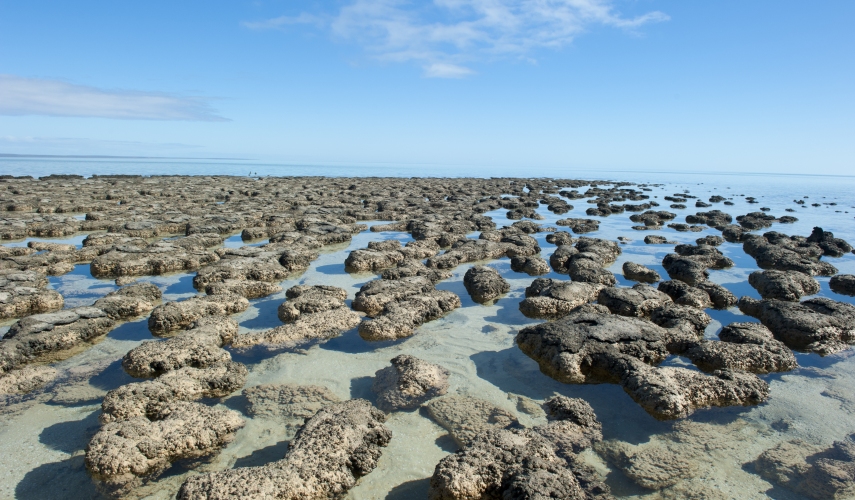
[Stromatolites in Shark Bay, Western Australia. Image: ©Shutterstock/Rob Bayer].
We've got the various mine sites that I take the kids to – so, you can see how their parents are actually forging a living and how science applies in real life and into careers. That's a big bonus as well of these field trips – the purposeful, meaningful learning is going to these mine sites and whether it's geology or mining engineering or metallurgy or environmental, their learning then leads down into these particular pathways. So, that's really an important aspect.
I go to Fitzgerald River National Park – a biodiversity hotspot of the world. There are plants there, the Gondwana species, the soil is so poor that they live in nothing. We look at the interrelationships between the Kundip quartzites and the Hakea victorialis and that's why it's only occurring there.
Then you stop on a sponty and you bash these komatiites – these rocks don't form now because the Earth is too cold. You've got these beautiful olivine, spinifex textures. These are the surprise ones that you stop along the way …
Even though the route might be the same from year to year, there's always something different. Even the Pinnacles, I've been there 14 or 15 times but again you just see something different and you do something different with the students. What I am finding is that the students, younger and younger are understanding more higher order concepts.
JE: Well, you certainly talk about science and the field trips with such passion, and I'm sure that you pass that onto the students. Congratulations again on the Prime Minister's Prize for Excellence in Science and thank you so much for sharing your expertise with Teacher .
Consider the science field trips you've organised in the past. How do you ensure that you're covering the curriculum while engaging students in 'real science' at the same time?
What health and safety precautions or risk assessments do you consider when planning a field trip? Have you got an emergency plan in place?
Related articles
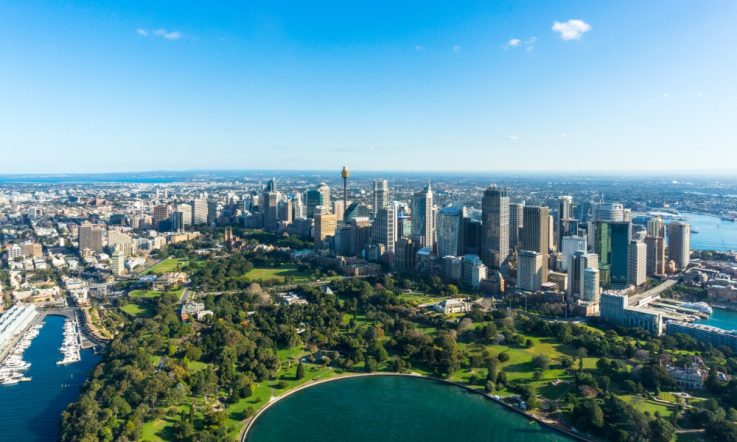
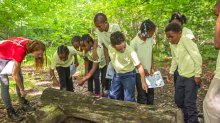
Yes, Field Trips Are Worth the Effort
Culturally enriching trips can boost grades and decrease absences and behavioral infractions, new research reveals.
Your content has been saved!
As a teacher, Elena Aguilar often looked for opportunities to get her students out of the classroom and into different neighborhoods or natural environments. “We did the usual museum trips and science center stuff, but I loved the trips which pushed them into unfamiliar territory,” writes Aguilar , an instructional coach and author. Nudging kids out of their comfort zones, she says, “taught them about others as well as themselves. It helped them see the expansiveness of our world and perhaps inspired them to think about what might be available to them out there.”
Aguilar’s thinking made an impact: 15 years after traveling with her third-grade class to Yosemite National Park, a student contacted Aguilar on Facebook to thank her for the life-changing excursion. “You changed our lives with that trip,” the student wrote. “It's what made me want to be a teacher, to be able to give that same gift to other kids.”
As schools grapple with pandemic-related concerns about balancing in-seat instructional time with non-essentials like trips, new research published in The Journal of Human Resources argues that field trips, and the vital educational experiences that they provide—whether it’s a visit to a local museum or a big commitment like Aguilar’s national park trip—deliver a host of positive social and academic outcomes and are worth the effort.
“The pandemic should not keep schools from providing these essential cultural experiences forever,” asserts Jay P. Greene , one of the study’s co-authors and a senior research fellow at the Heritage Foundation, in an opinion piece for the Daily News . “If schools make culturally-enriching field trips an integral part of the education experience, all students—especially those whose parents have a harder time accessing these experiences on their own—would benefit.”
In the study, researchers assigned more than 1,000 fourth- and fifth-grade students in Atlanta to two groups. One group participated in three to six “culturally-enriching” field trips—visits to an art museum, a live theater performance, and a symphony concert—while students in the control group stayed put in class. The outcome? Kids in the field trip group “scored higher on end-of-grade exams, received higher course grades, were absent less often, and had fewer behavioral infractions,” compared to students in the control group, according to a ScienceDaily brief . Benefits lasted two to three years, Greene writes, and were “most visible when students were in middle school.”
“We are able to demonstrate that a relatively simple intervention—and we consider it pretty low-touch; three field trips in a year, maybe six field trips in two years—can actually have some substantial impacts,” says lead study author Heidi Holmes Erickson in an interview with The 74 . “They’re not just limited to social benefits. It shows that smaller interventions can actually have some significant effects on academics as well.”
Field trips aren’t a threat to in-class instruction, Erickson notes, they’re a tool to help bolster engagement and expand students’ horizons. “It's possible to expose students to a broader world and have a culturally enriching curriculum without sacrificing academic outcomes, and it may actually improve academic outcomes,” Erickson says. Far from harming test scores, the researchers found that culturally rich excursions reinforce academics and “students who participated in these field trips were doing better in class.”
Meanwhile, class trips don't need to be elaborate productions to make an impact: small excursions outside the classroom—"low-touch," as the researchers call them—can pack a punch. Here’s how three educators recommend dialing it back with low-stakes options that are both engaging and stimulating for students, but might not require days to prepare and plan:
Make Them Bite-Sized : Instead of allocating an entire day to a field trip, educational consultant Laurel Schwartz takes her classes on micro field trips , or “short outings that can be completed in a single class period.” These real-world encounters, she says, are especially beneficial for English learners and world language students. A micro field trip to a nearby park or around school grounds, for example, can be a great opportunity to “enhance a unit on nature and wildlife while reinforcing vocabulary for senses, colors, and the concepts of quantity and size,” Schwartz writes. “Afterwards, students might write descriptive stories set in the place you visited using vocabulary collected and defined together by the class.”
Try Teacher-Less Trips : To encourage exploration and learning outside of the classroom, former social studies teacher Arch Grieve removes himself from the equation with teacher-less field trips rooted in students’ local communities. Grieve only suggests options that are directly tied to a unit being discussed in class—like attending a talk at a local university or visiting a museum or cultural festival—and offers extra credit to incentivize students. “These trips allow for a greater appreciation of my subject matter than is possible in the school setting, and perhaps best of all, there's little to no planning involved.”
Explore Virtual Options : It may not be as fun as visiting in person, but the Internet makes it possible to visit museums like The National Gallery of London and The Vatican Museums without leaving the school building. Middle school English teacher Laura Bradley likes to search the Museums for Digital Learning website by topic, keyword, and grade level, to find lessons and activities that meet her unique curricular needs. The site grants access to digitized museum collections, 3D models, audio files, documents, images, and videos.
- Go School Trip - Make Better Tomorrow

- Search for:
- Vietnam School Trips
- Cambodia School Trips
- Laos School Trips
- Myanmar School Trips
- Thailand School Trips
- Indonesia School Trips
- Japan School Trips
- Singapore School Trips
- China School Trips
School Trip Blog
What is field trip | definition of field trip in education.
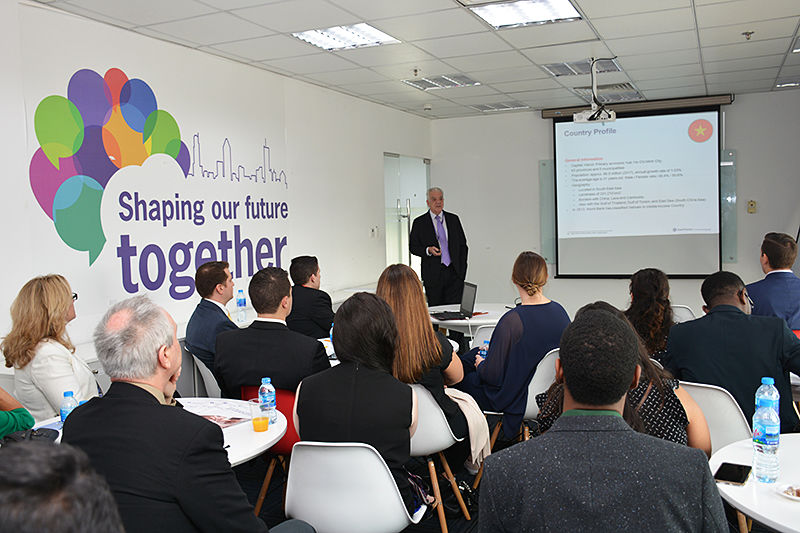
The term “field trip” has been known for decades in many sectors and it is a common term used in worldwide schools. It seems that a field trip is a favorite part of both teachers and students who are keen on learning and discovering. So, what is a field trip in education? Scroll down to find out the field trip definition and its many types.
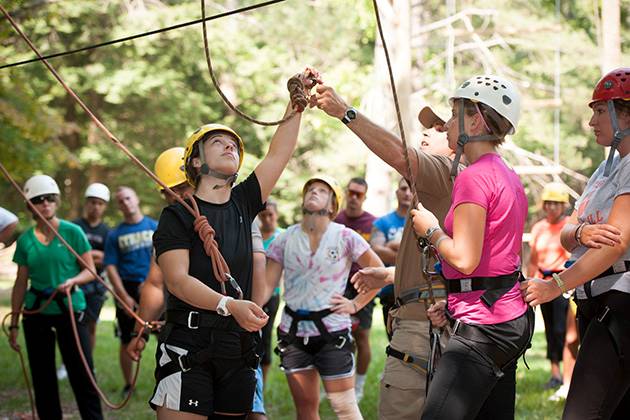
Educational Field Trip Definition
A field trip or excursion is a journey taken by a group of people to a place away from their usual environment. In education, field trips are defined as visits to an outside area of the normal classroom and made by a teacher and students for purposes of firsthand observation. A field trip can be expressed in many terminologies. People call educational trips or school tours in the UK and New Zealand, and school tours in the Philippines. Field trips are a popular method carried out for students to introduce to the concepts, experiences, and ideas that cannot be given in a classroom environment. School tours can be considered as short-term learning activities providing students the opportunity to observe their chosen subject outside of a classroom setting. Exploring other cultures and customs, getting to the motherland of languages, uncovering pristine nature and experiencing fascinating local life are striking demonstrations of educational school trips
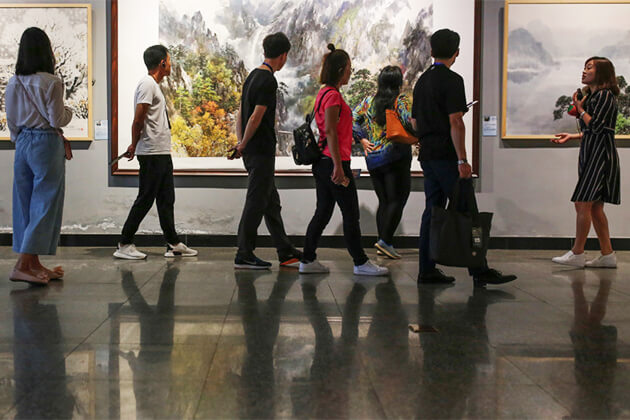
Types of Field Trips
Those listed field trip ideas that help to clear field trip meaning. Efficient educational tours can spark students’ imagination, give them valuable experiences and refresh their minds after days with pencils and papers. A school tour can be themed with one type of field trip or combined by various school trip ideas.
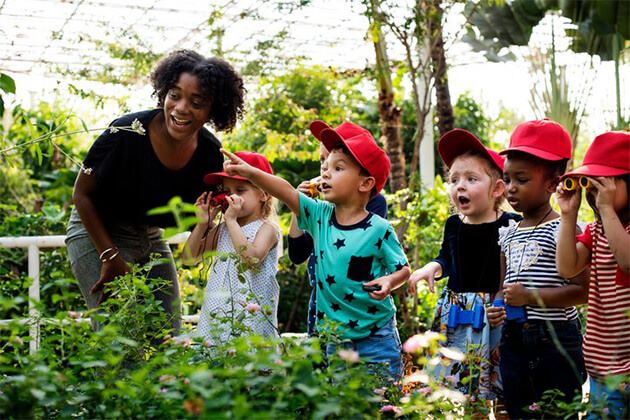
Sightseeing Field Trip
Students are definitely eager the most to sightseeing school trips enchanting them by a myriad of appealing attractions in their wish destination. Admire well-known attractions, explore historic structures, discover World Heritage Sites, unwind on spectacular landscapes and freshen in front of scenic vista are incredible activities that gain huge interests from students and strongly inspire them.
Language and Culture Educational Field Trip
For students learning foreign languages, field trips are very important and helpful to improve the language and explore the alluring indigenous culture. Join immersive activities, stay at a local homestay, take language lessons and visit local markets enable students to practice the language, get a deeper understanding of local culture and their captivating paces of life.
Gardening and Farming Field Trip
This might be an interesting activity attracts lots of students’ attention thanks to its strangeness to their usual life. Discover specialty farms that grow the normal crop and even irregular crops will surprise curious students. Learn how vegetables are produced, explore and give a try to do traditional farming techniques of local people leaves memorable experiences for students.
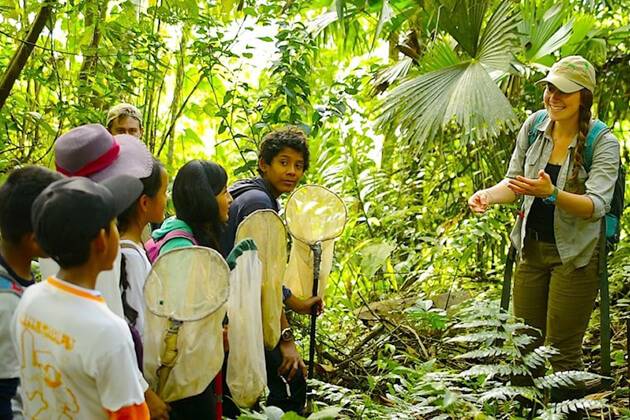
Manufacturing Facility Field Trip
Students can be guided to any factory where equipment, cars, tools, packaging or any other things are made. The mechanized facilities and assembly lines are interesting for students to learn about the production process, how raw materials are utilized and how workers use them to make the final product.
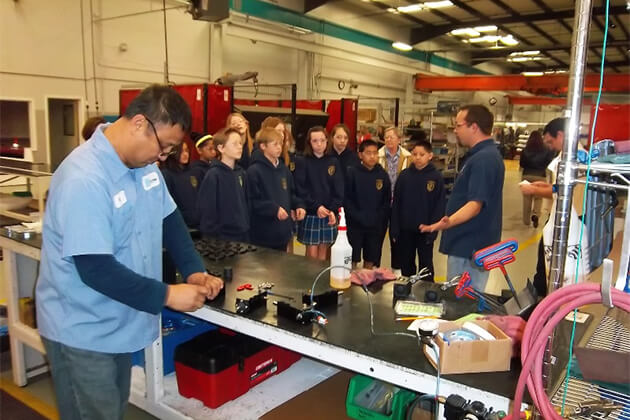
Eco-adventure Field Trip
Discover the natural world is a highly important perspective in the educational sector. Students can be entertained and refreshed by trekking through untouched natural beauties to inspect local plant life and wildlife animals. This opportunity also adds to local historical factors such as early life remnants.
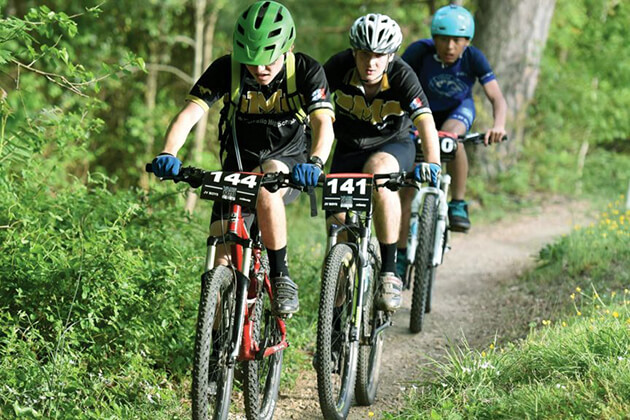
Business Educational Tour
Take business study trips, your students will be delighted by bustling financial and business centers. Business study trips help process business theories in the classroom into life as students explore great commercial organizations. Business field trip gives students the chance to immerse in stimulating and dynamic environments. Visit a range of famed organizations and large corporations will perfect business school trips.
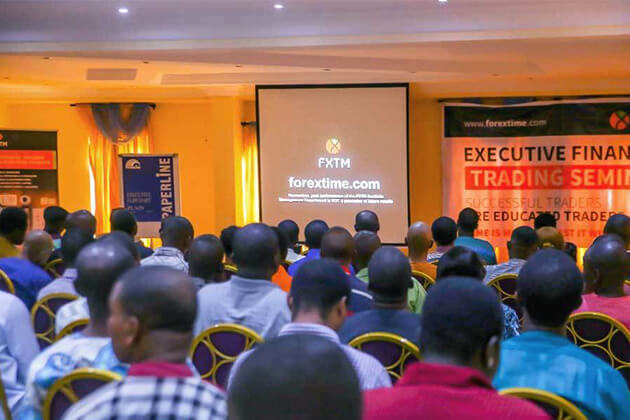
Username or email address *
Password *
Remember me Log in
Lost your password?
In detail, with clear examples, discuss the field trip as a method of teaching, its procedures, benefits, and limitations of the method.

Similar Questions
What are the functions of library catalog, what is the advantages of library catalog, what are the forms of library catalog, what is cataloging, discuss, with relevant examples, the types of phrases and clauses., outline piaget's stages of moral development. how does moving from heteronomous to autonomous morality change understanding of rules and justice, will the girl benefit nigera if the scholarship is granted upon sexual favor in the novel no longer at ease, how did the lesson accommodate diverse learners' needs during the language and editing skills lesson, how will my mentor and i know whether outcomes were achieved during the language and editing skills lesson is it an informal or formal assessment, teaching strategies my mentor teacher and i will use in a language and editing skills lesson., please log in to continue., be one of the experts, frequently asked questions, terms of use, privacy policy, select language.

IMAGES
VIDEO
COMMENTS
Field Trip as a Teaching Strategy. Field trip can be exciting as well as enlightening for students. Field trip ought to be a part of the school curriculum as it is an effective teaching strategy that facilitates learning, outside the classroom. Lectures can be tiring and it is hard to keep students engaged in the process of learning.
"Field Notes" by David W. Mogk, Dept. of Earth Sciences, Montana State University: Research based methods for successful field trips, including specific examples for a ... Using the Theory of Planned Behavior to understand student attitudes and constraints toward attending field trips. Journal of Teaching in Travel & Tourism, 11 ...
In teacher education, experiential education, such as field experiences, has been widely used to enhance the learning of students and prepare them to be effective teachers (McGlinn, 2003).Classroom teachers also use experiential education, typically in the form of field trips, to expand the school curriculum (Kisiel, 2003).Experiential learning is a teaching strategy that provides concrete ...
Numerous research studies in science education have documented significant increases in participant factual knowledge and conceptual understanding after participation in well-planned field trips. When planning and organizing a successful field trip, three important stages should be included: pre-trip, trip, and post-trip (see Figure 1). Figure 1.
Field trips' academic and social benefits are well-researched, but these events require thoughtful planning to maximize potential learning in a new and unfamiliar environment. Inquiry-based engagement offers educators a simple, versatile approach to place-based learning that they can adapt to fit any age group or content area. Educators know that lengthy and frequent interactions with ...
Experiential learning is authentic, first-hand, sensory-based learning. Experiential activities explore, touch, listen to, watch, move things, dissemble and reassemble. Learning consists of grasping an experience and then transforming it into an application or result (Kolb, 1983).
Journal of Research in Science Teaching, 18(3), 275-279. Crossref. Google Scholar. ... Assessing the influence of preparation and follow-up on student outcomes associated with environmental education field trips. Environmental Education Research ... Methods development for systematic investigation of fctors driving outcomes in informal STEM ...
Field trips are a central teaching method in both natural and human geography (Allen & Barbour, Citation 2016), and geography is often described as "a science of synthesis, a science linking humanity and environment and creating a bridge between the social and natural sciences" (Holt-Jensen, Citation 1999, p. 2). The need to go into the ...
Instructors planning academic field trips along the terms of the third category should contact Dean George Levesque, 203-432-2920. Experiential learning in the form of field trips is not only pedagogically promising—it is also very popular among students. There is a general Yale student consensus that funded field trips make classes more ...
Field trips enable teachers to expand students' learning beyond the walls of the classroom into the vast community outside. They provide students with experiences that cannot be duplicated in the school, but are nonetheless an integral part of school instruction. … a field trip can best be described as a living laboratory in which learning is acquired through active, hands-on experience ...
Abstract. Field experiences are a fundamental and well-loved tool for teaching in the natural sciences. However, a number of concerns threaten continued incorporation of field experiences into courses, including increased class sizes, strained finances, legal liability, accessibility concerns, and the effects of COVID-19.
Museums, and many other kinds of field trips are multi-media experiences; therefore, learning is enriched and reinforced with superimposing sensory and intellectual inputs. Most museums are designed to stimulate curiosity and actively engage the visitor, so you have a very professional partner working with you to help your students learn.
Teaching Methods: Field trips. She's been called a 'true rockstar teacher' - in the past 10 years, geoscientist Suzy Urbaniak has planned and led 45 Australian and international field trips, helping students understand how their learning applies in the real world. This term Urbaniak received the 2016 Prime Minister's Prize for Excellence in ...
The results of the research conducted show as follows: 1) field trip activities as an effective learning method used by teachers in the gross motor learning process in the PAUD; 2) the ...
Try Teacher-Less Trips: To encourage exploration and learning outside of the classroom, former social studies teacher Arch Grieve removes himself from the equation with teacher-less field trips rooted in students' local communities. Grieve only suggests options that are directly tied to a unit being discussed in class—like attending a talk ...
A field trip or excursion is a journey taken by a group of people to a place away from their usual environment. In education, field trips are defined as visits to an outside area of the normal classroom and made by a teacher and students for purposes of firsthand observation. A field trip can be expressed in many terminologies.
A field trip can be a logistical nightmare without close coordination between the teaching staff and the venues to be visited. Anything can go wrong, from the program not living up to the teacher's expectations to conflicting schedules, which can cut the trip short. ... Another method is to hold a fundraiser that involves not just the parents ...
The study assessed the effectiveness and utilization of field trip as a method of teaching and learning chemistry at senior secondary schools in Owerri Municipal Council Area of Imo State, Nigeria ...
What Is a Field Trip? A field trip is a visit to an area outside of the normal classroom where children can try new things, have different experiences, and learn valuable life lessons. A field ...
teaching methods and learning processes as well as strategies to ensure student understanding. Since field trip is a method of teaching used to collect firsthand information in the course of investigation, this will enable both teachers and students to create meaningful and productive learning both
In addition, teaching strategies like academia-industry cooperative teaching, industry field trip, reflective writing, and project-based presentation were incorporated into each instructional ...
Field trips are a popular method of teaching that involves taking students out of the classroom to explore real-world environments related to the subject being studied. This hands-on approach to learning allows students to engage with the material in a more meaningful way and can enhance their understanding of complex concepts.
The field trip method is used to enhance specific learning experiences, where students visit certain places to study and investigate those places with the purpose of learning. ... In fact, art education in elementary schools aims to guide students in developing creativity, thus requiring teaching methods that support the development of students ...
The result of the study revealed that field trip teaching method better enhanced students' achievement in Biology than demonstration method. The result also indicated that there is no significant ...